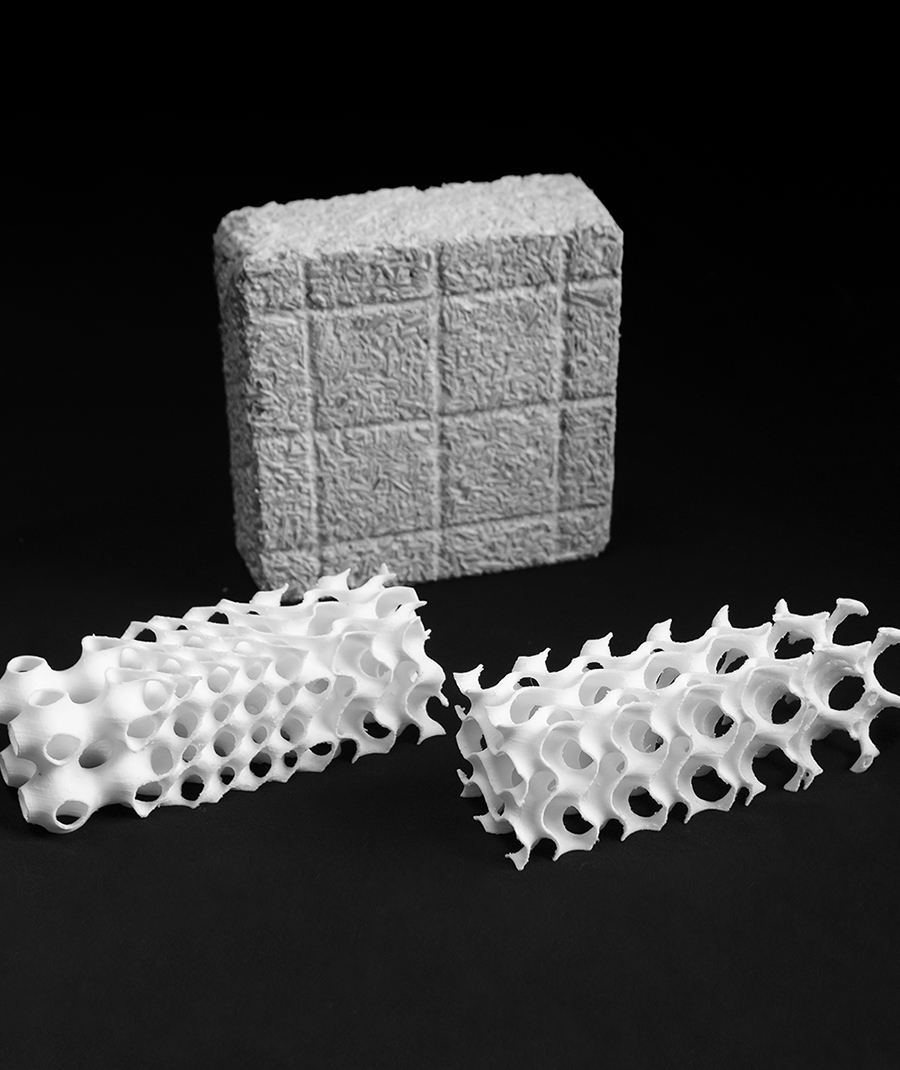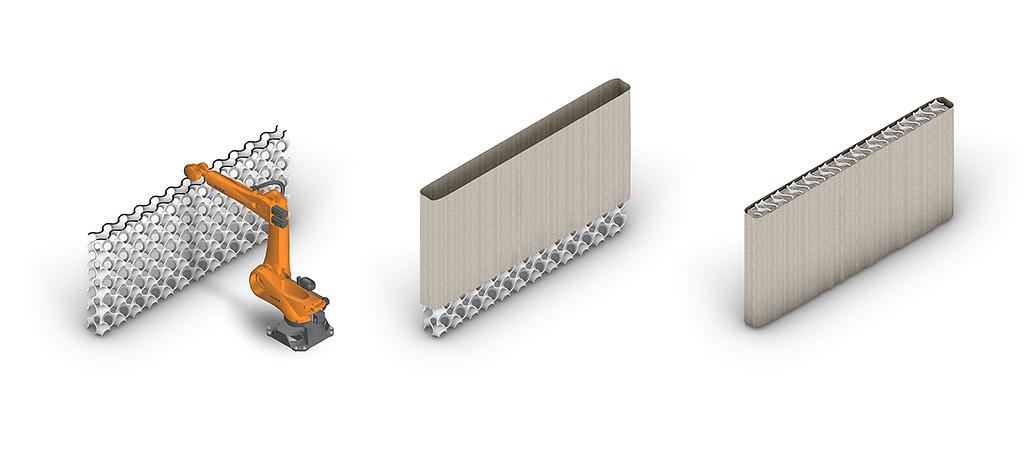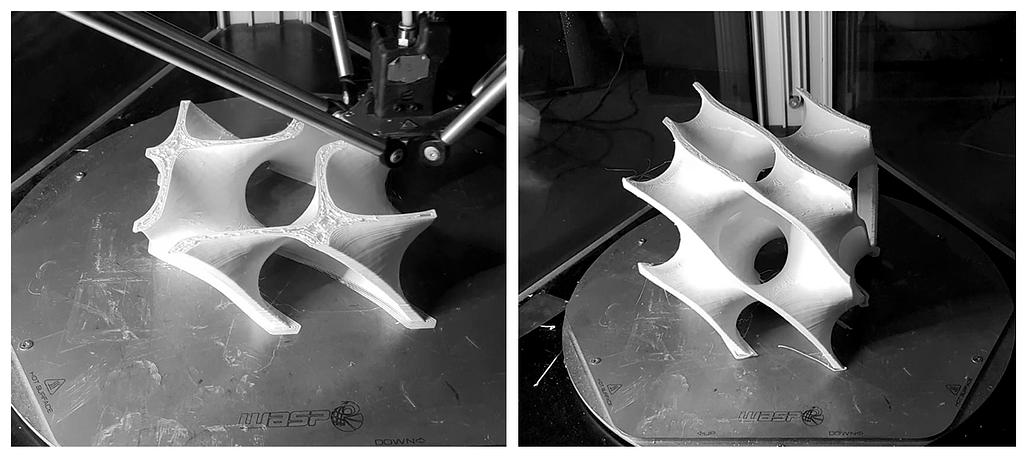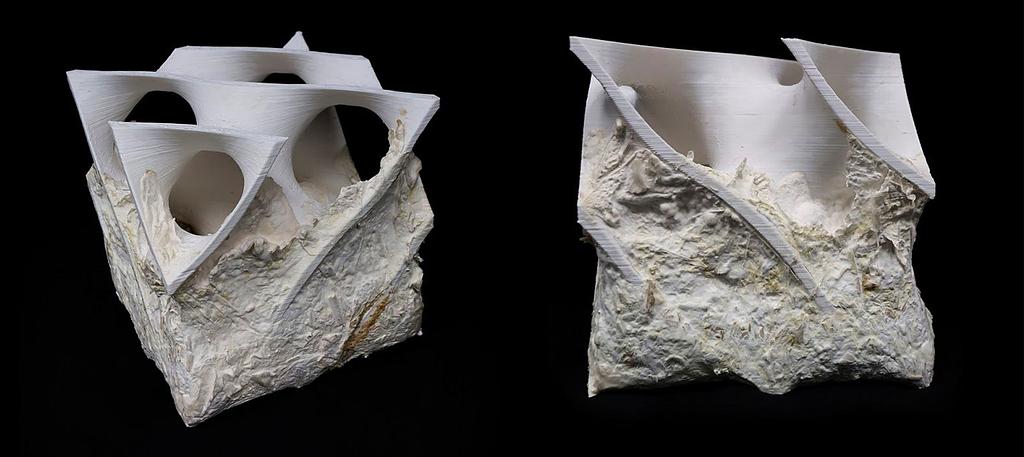Conventional construction methods significantly contribute to environmental degradation through heat generation, pollution, resource depletion, and material waste. As global population growth drives an increasing demand for construction, the industry faces a pressing challenge: how can we build sustainably without compromising performance or scalability?
This research project proposes an innovative, fully circular construction system that integrates mycelium-based composites with adaptive, 3D-printed lattice structures made from recycled plastic. The concept is rooted in sustainability models such as Circular Economy, Cradle to Cradle, and Upcycling, and draws inspiration from disciplines including biology, mycology, and mathematics.
At the material level, mycelium composite offers promising thermal, acoustic, and fire safety properties, while also being completely biodegradable at the end of its lifecycle. Despite its advantages, mycelium is not yet a viable load-bearing structural material. To address this limitation, the project introduces a lightweight lattice framework that can serve as a porous, structural scaffold hosting the mycelium.
The structure is designed using Triply Periodic Minimal Surfaces (TPMS)—a class of mathematically derived geometries renowned for their exceptional strength-to-weight ratio. These complex surfaces are unfeasible to fabricate with traditional methods, but thanks to additive manufacturing, specifically Big Area Additive Manufacturing (BAAM), they can now be produced at architectural scale.
To enhance circularity, the filament used for printing is derived from plastic waste, transformed using filament production technology developed by Filabot. The result is a composite system that is structurally efficient, environmentally regenerative, and industrially scalable.
This approach not only rethinks materials and structure but also presents a blueprint for integrating bio-fabrication and digital manufacturing into the future of construction. It aims to minimise waste, reduce dependence on non-renewable resources, and reconfigure our relationship with the built environment, making it adaptive, restorative, and ecologically aligned.
SCIENTIFIC COORDINATOR
Ingrid Paoletti
TEAM
Kasra Behforouz






